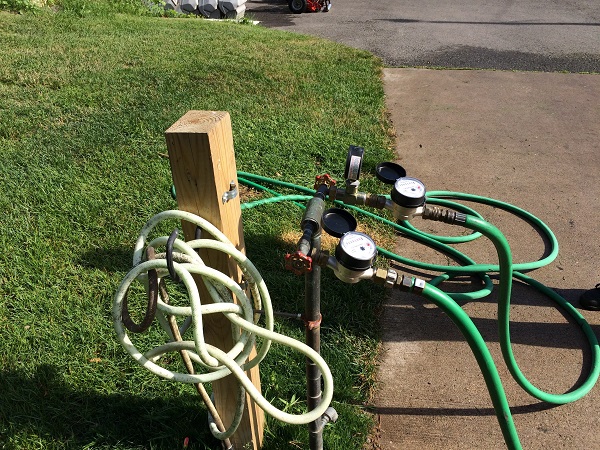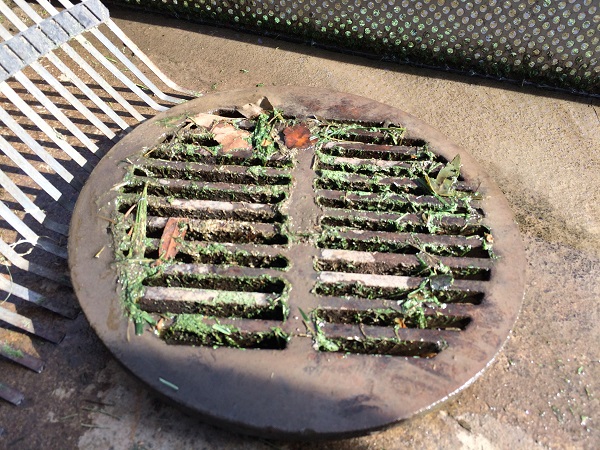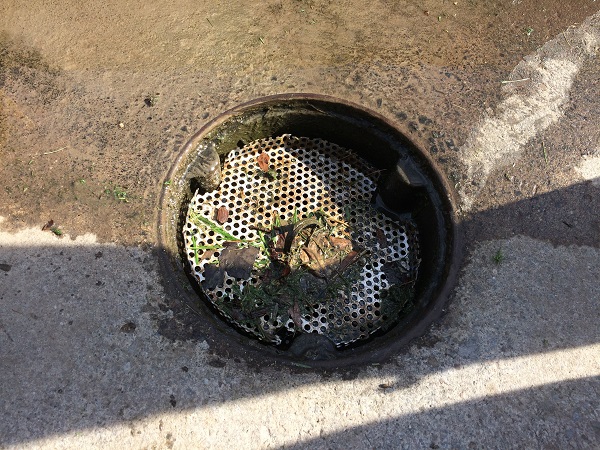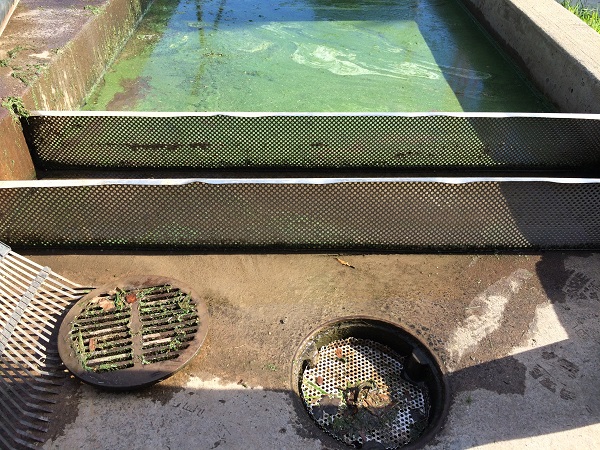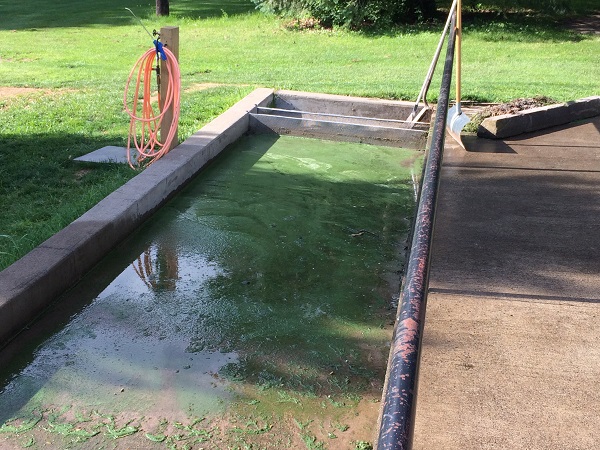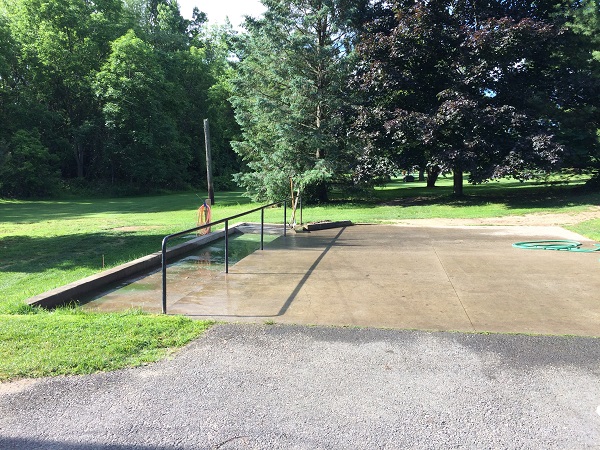Blog
Wash Pad Demonstration @ Locust Hill
Following the publication and launch of the NYS BMP website, an extensive survey of superintendents in the state was conducted to assess level of competency regarding BMPs and existing alignment of properties with established BMPs. The survey suggested priority areas for our education and outreach efforts, including maintenance facilities and organic- and chemical-waste management and containment. For example, the need for affordable equipment-washing solutions was obvious as well as observations during course visits in NY State.
To address this need, we have initiated a demonstration project on equipment wash pads in partnership with the Locust Hill Country Club in Rochester, Cornell University, the New York State Pollution Prevention Institute at the Rochester Institute of Technology (RIT), and the University of Buffalo. Prior to the demonstration, Superintendent Rick Slattery worked with RIT on a NYS Department of Environmental Conservation (NYSDEC)-funded feasibility study that collected baseline information for the design of a new wash pad system, as summarized in our case study.
Locus Hill Country Club is a perfect site for this demonstration project for two reasons: the commitment of Superintendent Slattery to environmental stewardship and a real-world issue that needs to be addressed. Slattery has been nationally recognized for his commitment and has been awarded the NYSDEC Environmental Leaders award. He has also shepherded Locust Hill through the Audubon International certification process to achieve Certified Cooperative Sanctuary status.
The real world issue addressed in the demonstration project is the volume of wash water generated by Locust Hill. Being located at the edge of the suburban-rural divide, houses surround the Locust Hill course. Proximity to the equipment wash pad drainage area resulted in adjacent homeowner’s complaints of odors from the discharge. Because functionally organic debris (clippings, leaves, etc.) was already strained from the wash water, addressing the amount of water being used in washing operations is the solution to eliminating odor issues
This demonstration project is utilizing the feasibility study results for the design of an affordable equipment wash pad system that is estimated to reduce water use by up to 90%. Funded by a Turf Environmental Stewardship Fund grant, a prototype wash pad system is being built and its performance will be documented.
While construction is under way, Locust Hill staff are already implementing two of the feasibility study recommendations: blowing off clippings before washing and using low-flow nozzles to significantly reduce water use. Construction of the new wash pad system should be complete by the end of this summer. A Cornell University case study, project report, and conference presentations will follow to provide detailed information useful to superintendents across the state.
The slide show below depicts the wash pad operations prior to the development of a prototype wash pad that will dramatically reduce water usage. We will provide a mid-construction update on this blog later this year.
Dollar Spot
Dollar spot, caused by the pathogen Sclerotinia homoeocarpa, is a common golf course disease in New York State. Besides using chemical controls, managers can plan to lessen disease incidence and severity with the following activities:
- Plant resistant cultivars of creeping bentgrass such as Memorial and Declaration.
- Minimize moisture stress and leaf wetness.
- Remove morning dew as early as possible.
- Roll putting greens three or more times per week.
- Apply biological organisms known to suppress dollar spot such as Bacillus licheniformis, Bacillus subtilis, and Pseudomonas aureofaciens.
- Use horticultural oils (Civitas), labeled for the intended use both for treated area and pest, instead of or in conjunction with traditional fungicides.
Pollinator-Related Resources for Turf Managers
While the NYS BMP Committee is hard at work formulating BMPs for pollinator protection on the state’s golf courses, an increasing amount of information is available to help golf course superintendents protect pollinators by minor modifications to management regimes and to enhance habitat to help sustain pollinator populations. Selected publications and websites are briefly described below:
Websites:
- New York State Integrated Pest Management, Cornell University IPM program web page with resources specific to pollinators and related links to additional information.
- Pollinator Network @ Cornell. Listing of pollinator-related publications and information.
- New York State Pollinator Protection Plan NYS DEC publication that includes an overview of the issues related to pollinator species (both managed bees and wild species), guidance for state agencies, and BMPs relevant to superintendents (Appendices C: Landowner/Grower BMPs and D: Pesticide User BMPs).
- Ecoregional pollinator-friendly planting guides Pollinator Partnership web site that provides regional plant guides of native plants, including trees, shrubs, annual and perennials specifically used by pollinators. Also includes a description of the types of nesting sites/materials by pollinator types.
- NYS BMP YouTube Channel. The home of the NYS BMP program videos. Currently featuring a 4-part case study of enhancing pollinator habitat on a golf course on Long Island.
- List of beekeeper organizations in New York State
Publications:
- Best Management Practices for Turf Care and Pollinator Conservation: Fast Facts, published by the North Central IPM Center, this two page publication summarizes the longer version of the Best Management Practices for Turf Care and Pollinator Conservation publication by the same authors.
- Making Room for Native Pollinators This USGA publication provides the basics of pollinator biology useful for pesticide applicators; detailed information on creating foraging habitat and bee nesting habitat and man-made nest sites specifically on golf courses.
- Specialist bees of the Mid-Atlantic and Northeastern United States, Published by the Xerces Society for Invertebrate Conservation and United States Geological Society, this publication lists host plants preferred by northeast bee species.
Pollinator Video
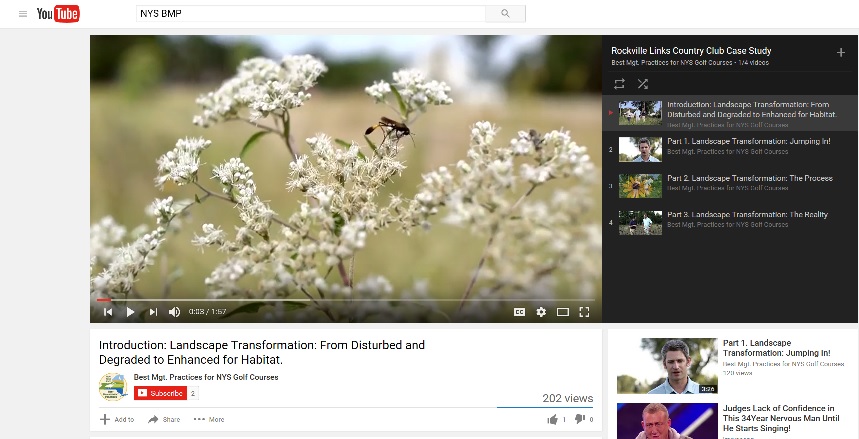
The NYS BMP project created a case study video series on protecing pollinators at Rockville Links Club in the midst of urbanized Long Island. Watch the video series to see how golf course superintendent Lucas Knutson used opportunities to renovate non-play areas on the course with pollinators in mind and the BMPs he follows to protect them. He has also introduced bee hives in two locations on the course and provides insight into communicating with potential concerns from club members.
A playlist has been created that organizes the four part case study series. An introduction provides an overview of the case study as well as BMPs for pollinators that superintendents can implement to protect both managed bees and native pollinators. Parts 1-3 provide more information on enhancing habitat on the golf course to support pollinator populations as well as experience in communicating these efforts to club members.
Seasonal Variations in Runoff Potential
Water enters hydrologic systems as precipitation, primarily in the form of rainfall or snowmelt. It is then delivered to surface waters from runoff or infiltrates into the subsurface. The amount of water that infiltrates into the ground versus becoming runo ff depends on a number of variables, including the intensity of precipitation or irrigation, soil infiltration capacity, site characteristics, antecedent soil moisture, and season. The following are some of the seasonal changes in runoff versus infiltration potential:
ff depends on a number of variables, including the intensity of precipitation or irrigation, soil infiltration capacity, site characteristics, antecedent soil moisture, and season. The following are some of the seasonal changes in runoff versus infiltration potential:
During the winter, soils in New York are likely to be frozen and impermeable to water. Snowmelt, rain, and low evapotranspiration rates in the spring generate wet soil conditions and downward movement of water to groundwater. The potential for runoff is high because the near-saturated or partially frozen soils have low water infiltration capacities.
During the summer, high rates of evaporation and plant water uptake may reduce soil water storage, leaving none to percolate downward. Summer rains only partially recharge the soil profile, and the soil’s moisture holding capacity is typically not exceeded. Except for high-intensity thunderstorms, runoff and erosion potentials are generally low during the summer.
In the late fall, evapotranspiration rates decrease, and groundwater recharge occurs when the moisture-holding capacity of the soil is exceeded. Runoff and erosion potentials also increase during this period. However, in New York, runoff from turf most often occurs from wet soils and not from high rainfall intensity.
Now on Twitter
 We are now on Twitter!
We are now on Twitter!
Follow us there to join in on the conservation while also showing your support for the NYS BMP program.
Know Your Soil
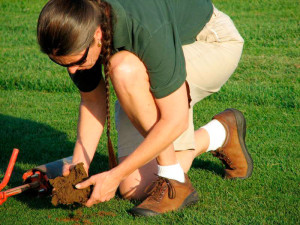 Few would argue that knowledge of the soils you are managing is a critical aspect of successful golf turf management. Soil management begins with knowing the type and characteristics of the soil at your property. Fortunately, most of the data we need is easy to access and interpret. The Natural Resource Conservation Service (NRCS) Web Soil Survey (WSS) provides soil data and access to the largest natural resource information system in the world.
Few would argue that knowledge of the soils you are managing is a critical aspect of successful golf turf management. Soil management begins with knowing the type and characteristics of the soil at your property. Fortunately, most of the data we need is easy to access and interpret. The Natural Resource Conservation Service (NRCS) Web Soil Survey (WSS) provides soil data and access to the largest natural resource information system in the world.
Of course, once you know the soil types and characteristics, soil testing allows for precise nutrient management programs for all nutrients other nitrogen as it can be used to determine nutrient levels, make fertilizer recommendations, and in some cases diagnose the cause of poor performing turf. Assessing the existing reservoir of available nutrients in the soil can minimize the need for supplemental applications of fertilizer, which saves money while protecting the environment. Learn what you need to know about soil testing: https://nygcf.com/nysgolfbmp_com/soil-testing/.
Pollinators
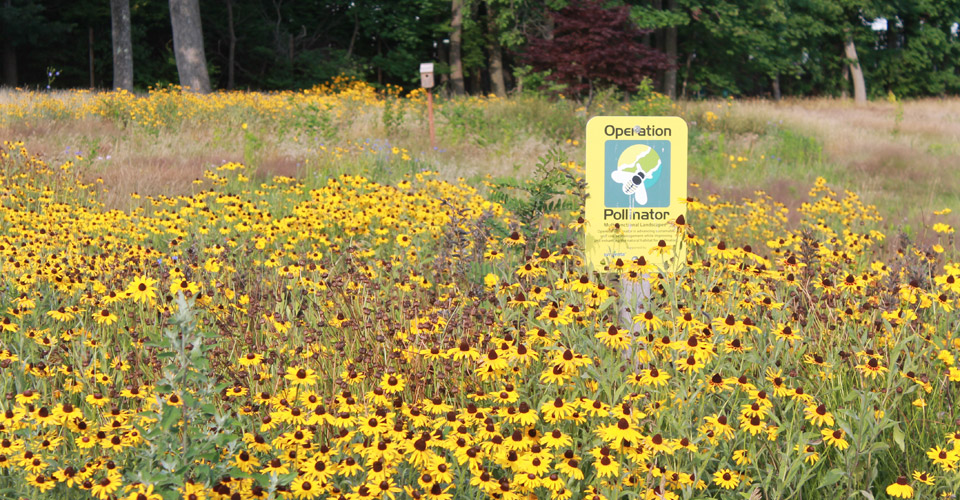
Pollinators are in trouble all over this country, including New York State, with documented significant declines in population levels. However, because golf courses provide a large expanse of mostly undeveloped land, they can help pollinators by providing habitat. These undeveloped expanses of land are of special significance especially in urbanized /suburbanized areas of the state that may not have expansive open areas.
The NYS BMP program has conducted a case study of the Rockville Links Club on Long Island where superintendent Lucas Knutson has renovated three areas on the golf course with pollinators in mind as well as adding bee hives to the golf course. These case studies (both written and video) show how Knutson established native areas, utilizes best management practices to protect pollinators, and how these efforts have been communicated to club members.
At Rockville Links, BMPs to protect pollinators from any impact from pesticide applications include:
- scouting, to determine pest location, movement, and overall pest pressure;
- product selection and selecting an effective product with low toxicity to bees and short residual toxicity;
- timing applications so as not to apply pesticides to blooming plants when bees might be present and mowing before applications; and
- watering in pesticides to drive product into the roots for uptake, unless the label indicates otherwise.
The NYS BMP program will be adding more information on BMPs for protecting pollinators and enhancing habitat to this web site later this year. In the meantime, additional BMPs for pollinators are detailed in the New York State Pollinator Protection Plan, http://www.dec.ny.gov/docs/administration_pdf/nyspollinatorplan.pdf.
NYS BMP Quiz and Assessment Results
Since publication of the NYS BMP guidelines, the BMP committee has focused on outreach and education efforts to promote the acceptance and implementation of BMPs in New York State’s golf industry. As part of these efforts, the state’s golf course professionals were surveyed last year to conduct a formative assessment of BMP concepts and a survey of BMPs as implemented on NYS golf courses.
The results were analyzed by Cornell University to determine educational and outreach priorities for our target audience of NYS superintendents and assistant superintendents. The following PDFs provide more detail on the analysis and the detailed responses to each question for both the quiz and survey:
- Formative Assessment of BMP Concepts on New York State Golf Courses
- Survey of Implemented Best Management Practices on New York State Golf Courses
- Detailed quiz questions and answers
- Detailed survey questions and answers
The NYS BMP quiz and survey will be available again in late 2017 and early 2018. Look for notices in the fall and plan to participate in this process.
